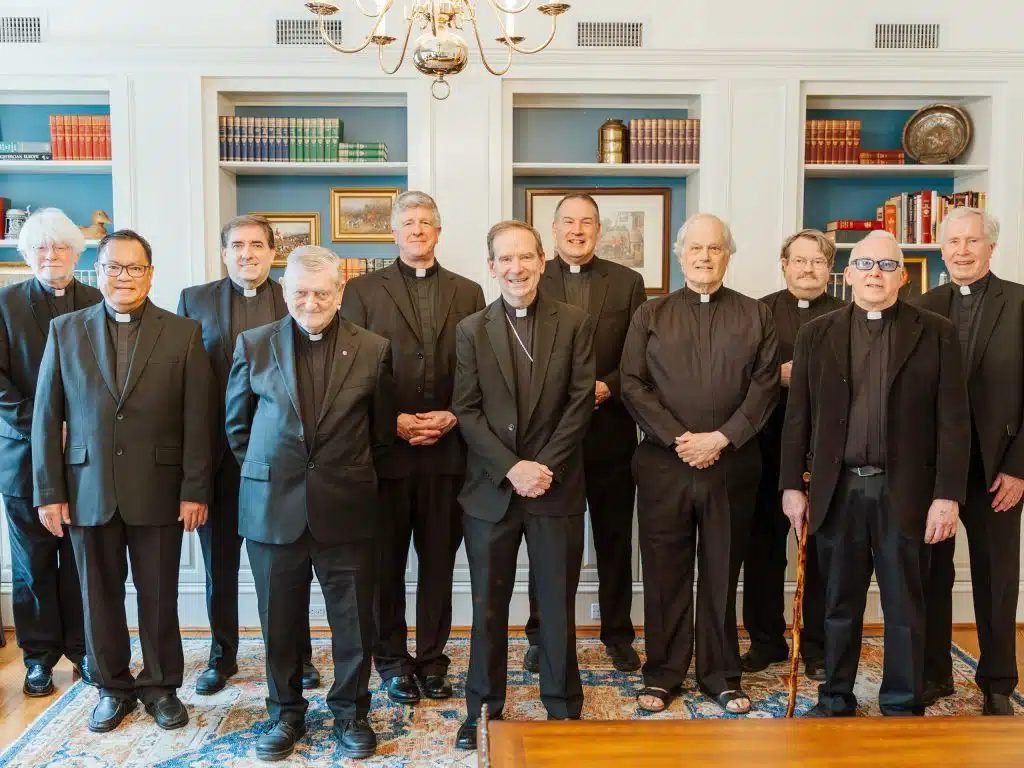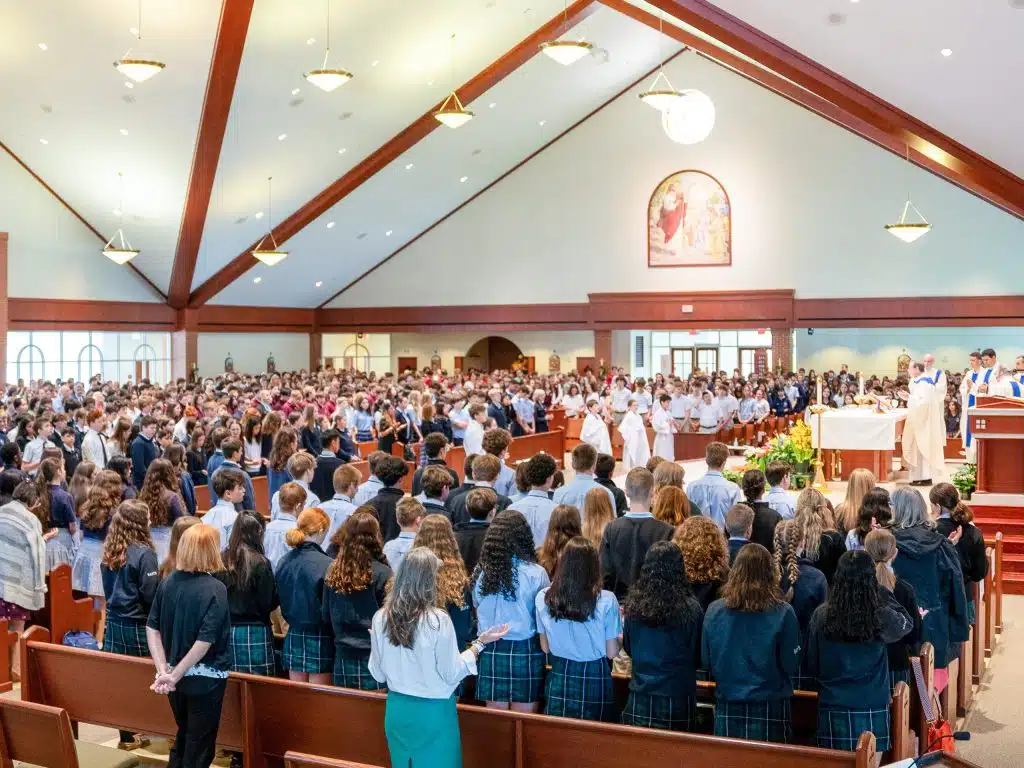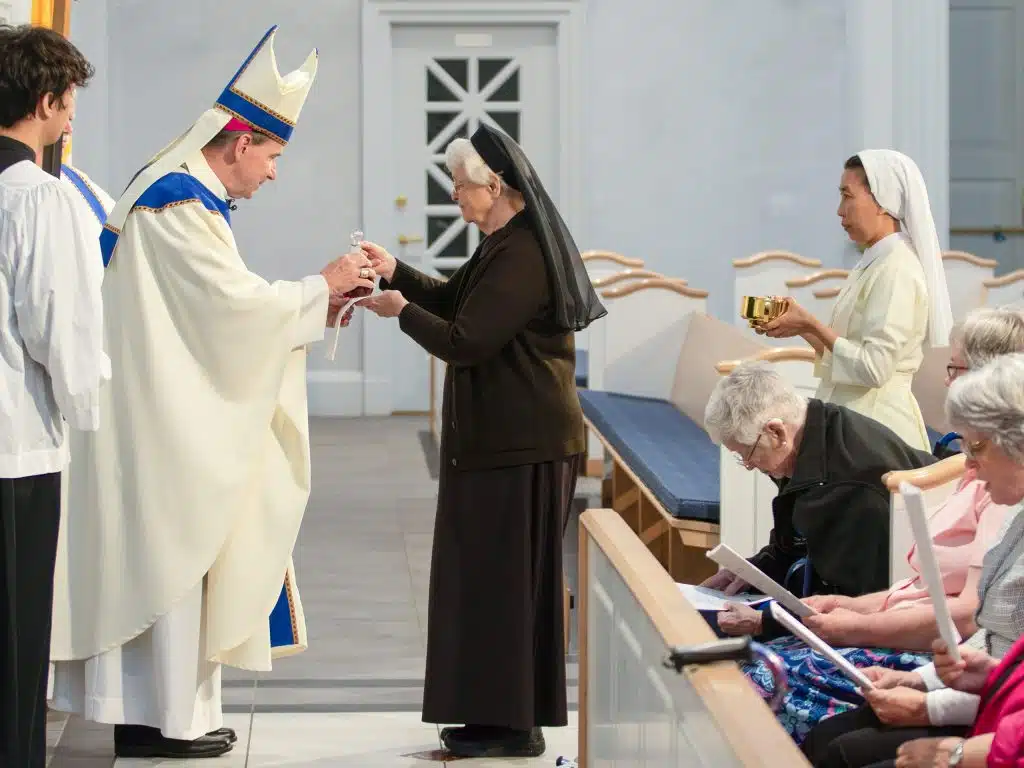When Annie Fernandez was a young teacher at a Catholic school in her native India, diversity meant religious differences. “We had Hindus, Muslims, Sikhs,” she said. “But the people all looked the same.”
Today, as principal of St. Michael School in Annandale, Fernandez takes a broader view. “I have learned the actual meaning of diversity,” she said.
While her students all were born in the United States, their parents are immigrants from at least 18 different countries in Asia, the Middle East, Africa, Central and South America. Of the 257 students enrolled, 74 are Hispanic, 55 are Asian, 29 are Black and 34 are two or more races. Fernandez said 77 percent of her students’ families identify as something other than Caucasian. Across all diocesan schools, it’s about 40 percent.
But race and ethnicity are just part of the picture. Teachers and school leaders must be mindful of other kinds of diversity as well: in intellectual ability, learning styles and socioeconomic backgrounds.
Because she’s an immigrant herself, Fernandez said her school families know she understands the challenges of bridging different cultures. “I have gone through this before, and that makes such a huge difference. I am very proud that I add to the diversity here.”
The demographics of the diocese have shifted a lot since the 1970s and ’80s when the school population was more homogeneous, said Superintendent Joseph Vorbach. But the Catholic school mission remains the same.
“God has placed before us these families who seek a Catholic education for their children, and we want to serve all of our students well,” he said. “We’re blessed to have the opportunity to educate them.”
As the number of Latino immigrants in the area has grown, the diocese has increased its outreach to the Spanish-speaking community, with programs such as the Madrinas Model, developed by the University of Notre Dame, in which community ambassadors known as madrinas (godmothers) help attract Latino families to Catholic schools, and make sure the students thrive. Schools also have increased the number of bilingual front office staff and have translated online application materials into Spanish, as well as Korean and Vietnamese.
Today, about 16 percent of the diocesan school population is Hispanic, up 5 percent from last year, said Assistant Superintendent Renee White. Overall diocesan enrollment is up 7.8 percent over last year — higher than the Catholic schools’ national average increase of 4.5 percent, she said.
The diocese provided more than $6 million in need-based tuition assistance last year; about 100 of the students at St. Michael received financial aid. But not all tuition assistance goes to immigrant families. Much of the diocese’s need-based aid goes to students in rural areas that have high rates of poverty and unemployment, such as around Culpeper and Fredericksburg, White said. With so many families experiencing job losses and layoffs during the pandemic, “the demonstrated need always exceeds the amount we have to give.”
Catholic schools also have seen a growing number of students with special needs in recent years, said Assistant Superintendent Diane Elliott. Every school in the diocese has students with an identified disability this year, about 9 percent overall, ranging from ADHD to hearing impairments to learning disabilities such as dyslexia. Elliott said 16 schools (12 elementary and all four diocesan high schools) have students with intellectual disabilities such as Down syndrome.
“Schools endeavor always to meet kids where they are,” said Vorbach. They do this through differentiated instruction, which benefits all students, not just those with special needs. Teachers customize lessons to students’ strengths, needs and individual learning styles. The same material may be presented several different ways, because visual learners might absorb it best through books and other written materials, while auditory learners might prefer listening to lectures, reading aloud or group discussions. Tactile and kinesthetic learners might need to move around the room, play a learning game or use Post-it notes.
“It takes some thoughtfulness on the part of educators, but it’s a beautiful challenge that our teachers respond to with great creativity every day,” Vorbach said.
On a recent Friday morning at St. Michael, elementary school students in colorful masks worked on art projects or debated fine points in a history lesson. In each classroom, a few faces were displayed on a large screen, participating via Zoom while isolating at home after being exposed to COVID-19. Their different ethnic and racial backgrounds seemed the last thing on students’ minds.
“Children don’t notice,” said Fernandez. What they do notice is what their friends from different cultures bring for lunch — often unfamiliar foods that look or smell different from what’s in their own lunch boxes. For the faculty, this is an opportunity to teach children how to express their curiosity in ways that won’t offend or hurt their friends’ feelings.
“If you don’t understand something, how do you ask about it so it doesn’t come across as rude?” she said. “You say, ‘That looks different from mine, tell me about it.’ ”











